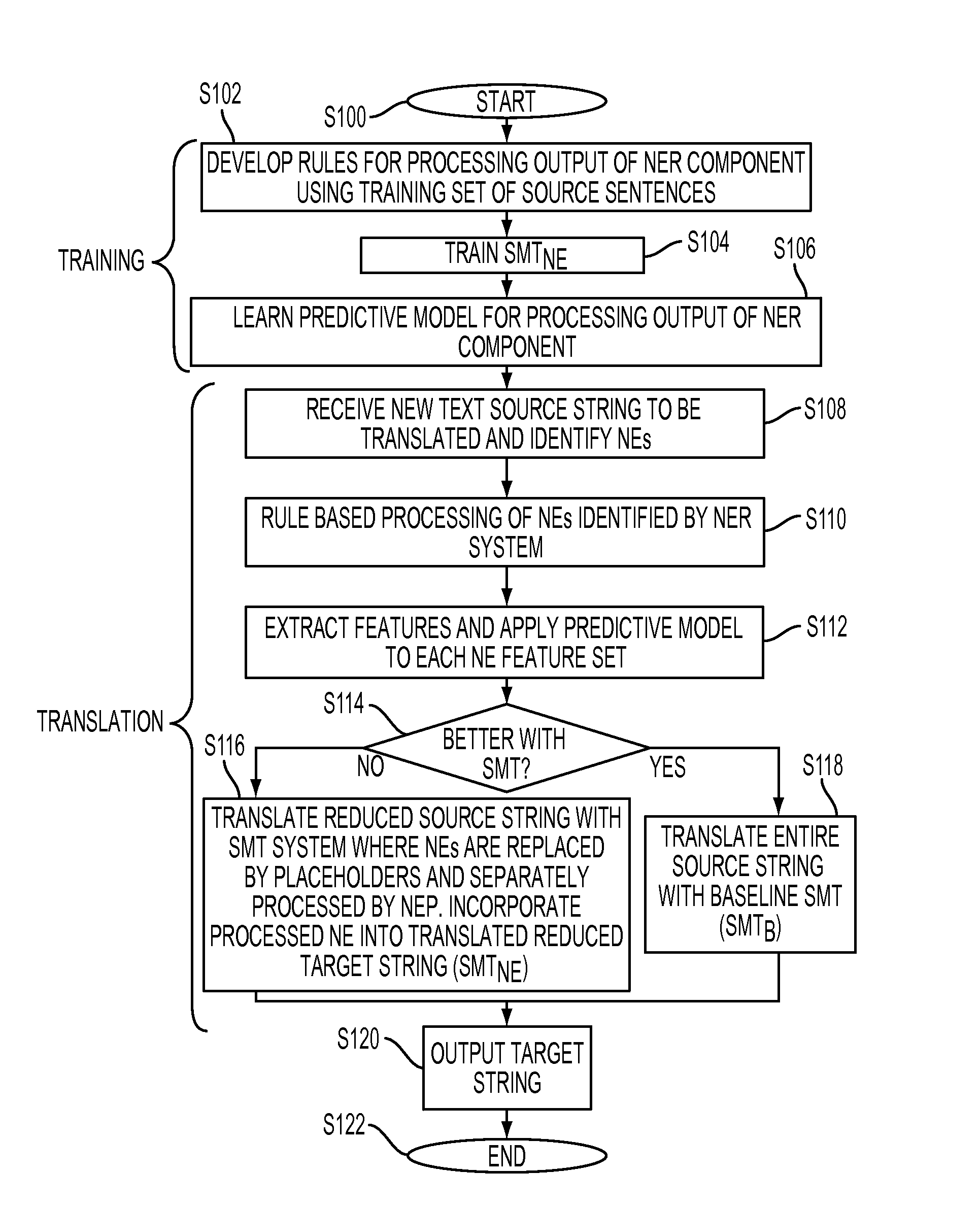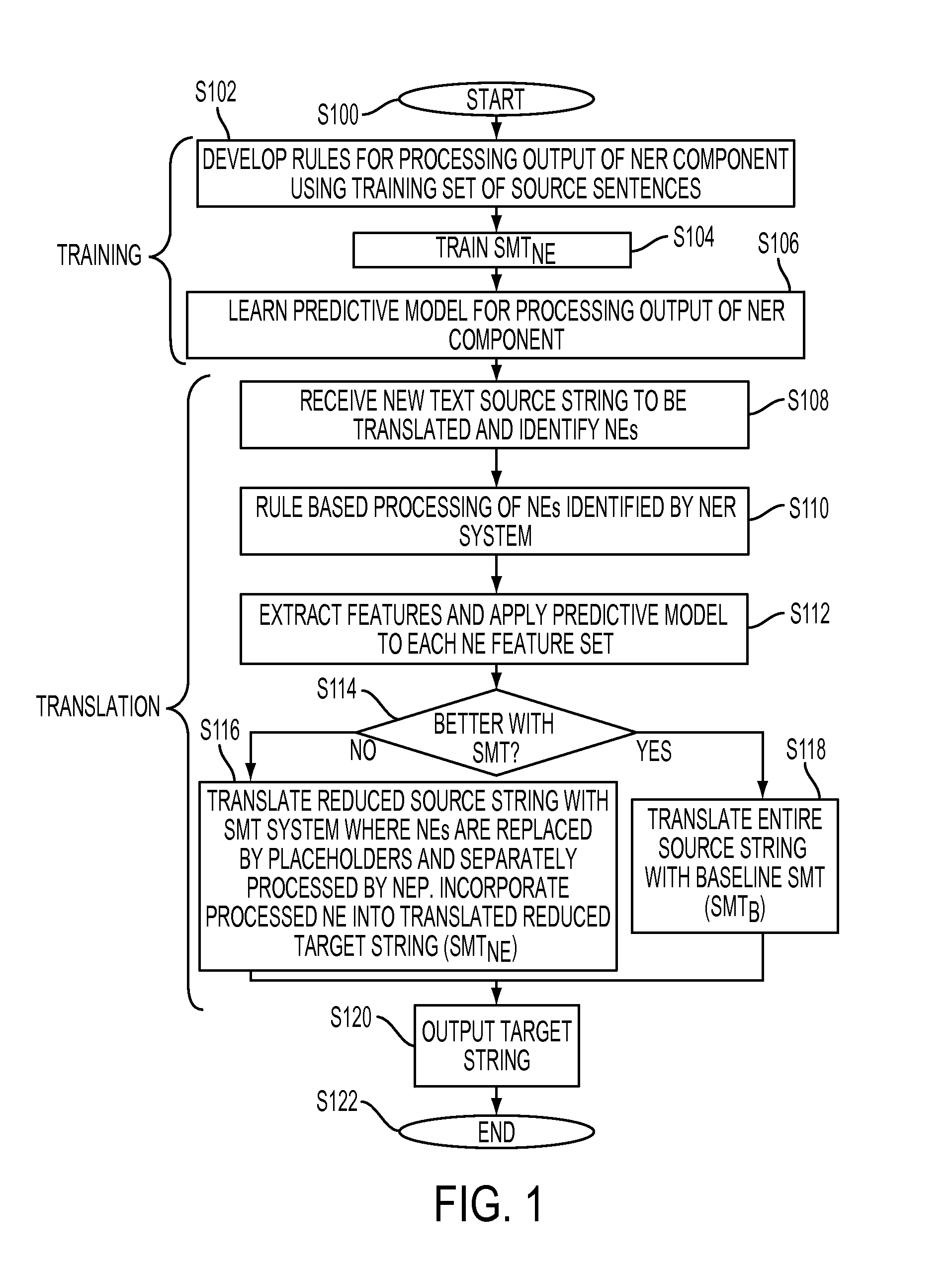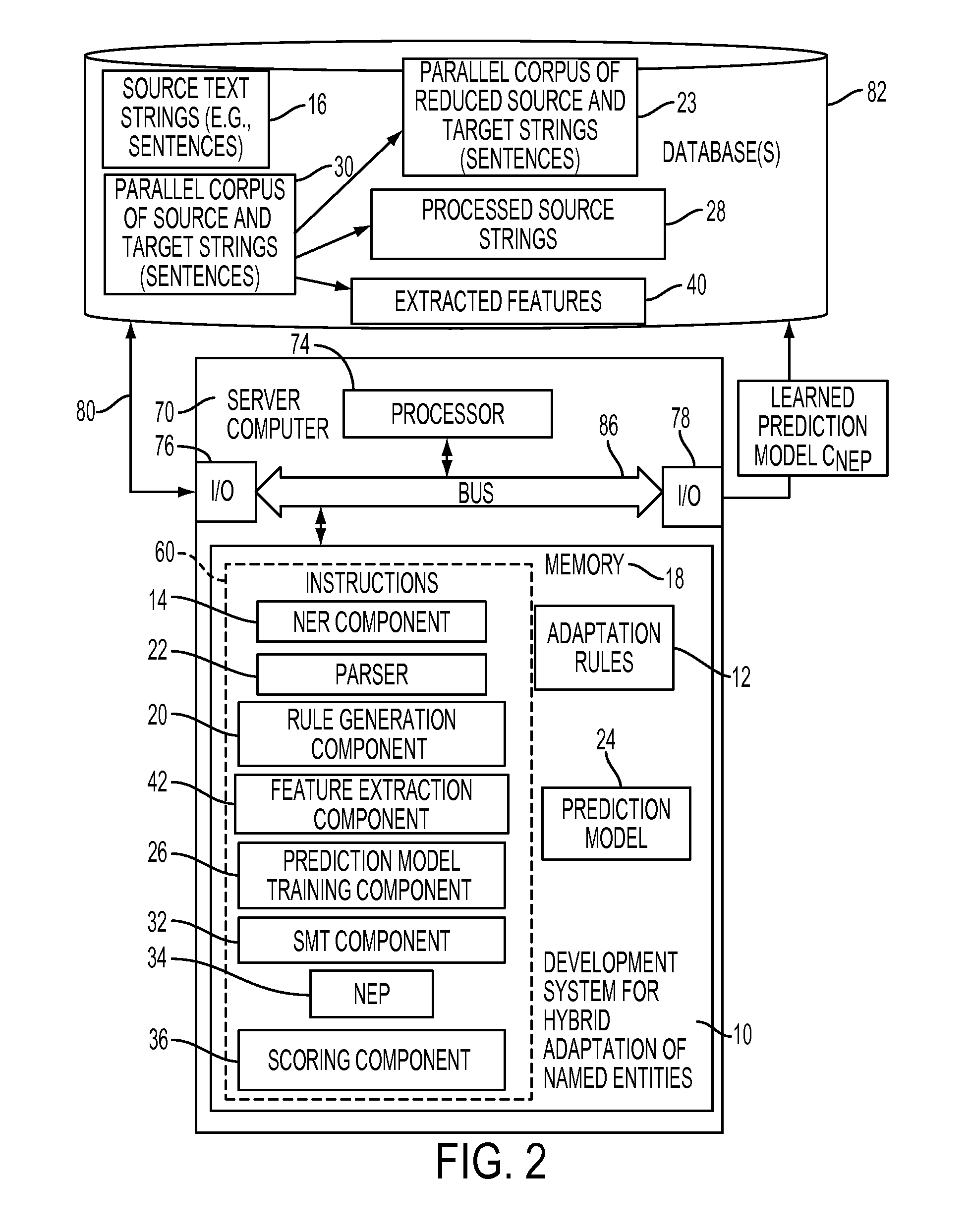Hybrid adaptation of named entity recognition
a named entity recognition and hybrid technology, applied in the field of machine translation, can solve the problems of serious impact on the final quality of the translation, the difficulty of correct treatment of named entities in statistical machine translation systems, and the sparsity of named entities in training and test data
- Summary
- Abstract
- Description
- Claims
- Application Information
AI Technical Summary
Benefits of technology
Problems solved by technology
Method used
Image
Examples
example features
[0100]The features used to train the model 24 (S106) and for assigning a decision on whether to use the NEP 34 can include some or all of the following:
[0101]1. Named Entity frequency in the training data. This can be measured as the number of times the NE is observed in a source language corpus, such as corpus 16 or 30. The values can be normalized e.g., to a scale of 0-1.
[0102]2. Confidence in the translation of an NE dictionary used by the NEP
[0103]34. As will be appreciated, there can be more than one possible translation for a given NE. For example, if NES is the source named entity, and NEt is the translation suggested for NES by the NE dictionary, confidence is measured as p(NEt / NES), estimated on the training data used to create the NE dictionary.
[0104]3. feature collections defined by the context of the Named Entity: the number of features in this collection corresponds to the number of n-grams that occurs in the training data which include the NE. In the example embodiment...
example
[0117]To demonstrate the applicability of the exemplary system and method, experiments were performed on the following framework for Named Entity Integration into the SMT model.
[0118]1. Named Entities in the source sentence are detected and replaced with placeholders defined by the type of the NE (e.g., DATE, ORGANIZATION, LOCATION).
[0119]2. The initial source sentence with the NEs replaced and the original Named Entity that was replaced are translated independently.
[0120]3. The placeholder in the reduced translation is replaced by the corresponding NE translation.
[0121]An example below illustrates the translation procedure:
[0122]Source:
[0123]Proceedings of the Conference, Brussels, May 8, 1996 (with contributions of George, S.; Rahman, A.; Alders, H.; Platteau, J. P.)
[0124]First, SMT-adapted NER is applied to the source sentence to replace named entities with placeholders corresponding to respective named entity types:
[0125]Reduced Source:
[0126]Proceedings of the Conference, +NE_LO...
PUM
 Login to View More
Login to View More Abstract
Description
Claims
Application Information
 Login to View More
Login to View More - R&D
- Intellectual Property
- Life Sciences
- Materials
- Tech Scout
- Unparalleled Data Quality
- Higher Quality Content
- 60% Fewer Hallucinations
Browse by: Latest US Patents, China's latest patents, Technical Efficacy Thesaurus, Application Domain, Technology Topic, Popular Technical Reports.
© 2025 PatSnap. All rights reserved.Legal|Privacy policy|Modern Slavery Act Transparency Statement|Sitemap|About US| Contact US: help@patsnap.com



